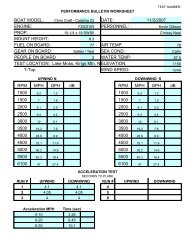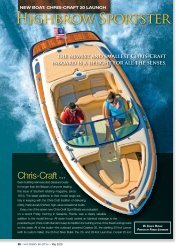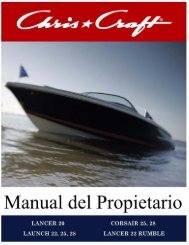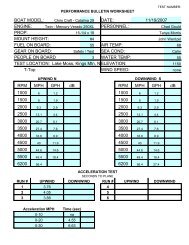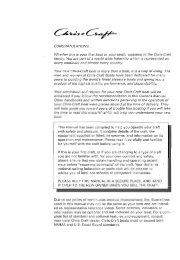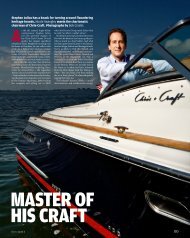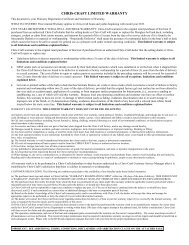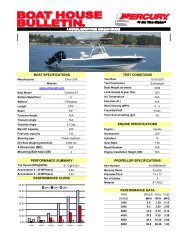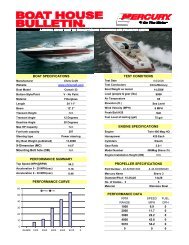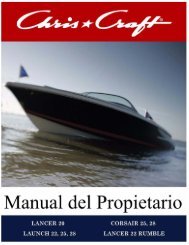Catalina Owner's Manual - Chris Craft
Catalina Owner's Manual - Chris Craft
Catalina Owner's Manual - Chris Craft
Create successful ePaper yourself
Turn your PDF publications into a flip-book with our unique Google optimized e-Paper software.
Safety and Operations<br />
Boating Courses<br />
Operating a boat requires a greater skill than operating a car or truck. To enjoy a pleasurable and safe boating<br />
experience you must acquire these skills. Some recommendations are:<br />
• Take a Coast Guard, United States Power Squadron boating safety course. For information call: 800-336-BOAT<br />
(2628), or<br />
• Take a boating safety course offered by local colleges or boating clubs.<br />
• Obtain “hands-on” training from qualified personnel on how to operate your vessel.<br />
Boating courses help you to gain knowledge and experience in such areas as, but is not limited to: navigation,<br />
seamanship, rules of the road, weather, safety at sea, survival, first aid, communications, and pollution<br />
control.<br />
Basic Seamanship<br />
As the owner/operator it is your responsibility to learn the “rules-of-the-road” and understand<br />
basic seamanship rules and standards, as only rudimentary information is repeated<br />
here.<br />
In practical terms boats that are less maneuverable have the right-of-way over more agile vessels. In general<br />
a power-driven vessel must give way to the following:<br />
• A sailing vessel under sail only (engine(s) not running).<br />
– When the sailboat is under engine power, it is considered a power-driven vessel.<br />
• Vessels propelled by oars or paddles.<br />
• A commercial fishing vessel engaged in fishing.<br />
– This does not apply to sportfishers or party boats.<br />
• Vessels with restricted maneuverability, such as:<br />
– Tow boats.<br />
– A vessel engaged in dredging activities or work that restricts it to a specific area.<br />
– A vessel engaged in the transfer of supplies from one vessel to another.<br />
• A vessel not under command, broken down.<br />
Meeting Situations<br />
When meeting in various situations the give-way vessel must take action to avoid a collision and maintain<br />
a safe distance. The stand-on vessel should maintain course and speed.<br />
If it becomes apparent that a collision is possible and the give-way vessel is not taking corrective<br />
action, it is your responsibility to take action and avoid a collision.<br />
Meeting Head-On<br />
When two boats meet head-on neither boat has the right-of-way. Both boats should reduce speed and pass<br />
port-to-port (Figure 2-2).<br />
2–8 <strong>Chris</strong>-<strong>Craft</strong>





